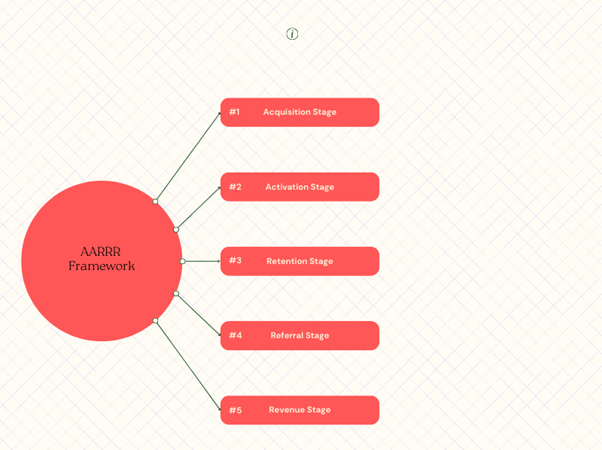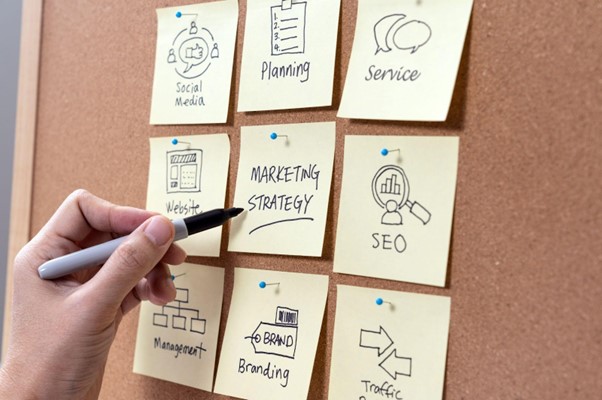In today’s highly competitive business landscape, it is no longer enough to rely solely on traditional marketing strategies to drive growth. With the rapid advancements in technology and changing consumer behavior, businesses are finding themselves in an urgent need of growth marketing.
Growth marketing goes beyond the conventional methods and focuses on leveraging data-driven insights, experimentation, and creativity to deliver sustainable business growth.
Think back of the time when you finally made a brave decision to leave the bounds for working for someone else behind and begin your own journey. The idea and great enthusiasm might have awakened you at midnight from your sleep. You are living your dream, and your company has grown over time.
But now as the captain of your own ship you find yourself at the crossroads, unsure on how to reach for further growth.
There’s a new-age marketing method to attract your existing customers and keep them coming back for more.
It’s Growth Marketing!
Let’s uncover everything about the marketing 3.0 that is Growth Marketing and why your business is in urgent need of growth marketing!
What is Growth Marketing? How is It Different from Traditional Marketing?
Growth Marketing is a dynamic approach to nurturing businesses, understanding customers’ needs, and building meaningful connections. It involves continuous learning, experimentation, and adaptation to ensure long-term success and celebrate growth milestones.
It is mainly designed for businesses that have the desire to demonstrate to the world that they have a few aces up their sleeves.
The best part about it? You can get valuable information about your customers to understand their needs at each stage of the sales funnel.
It’s all about starting small, testing the waters, and focusing your efforts where they count the most.

Growth Marketing adopts a more comprehensive approach towards analyzing a full customer journey, unlike traditional marketing which focuses only on creating brand awareness and acquiring new customers.
The main focus of the traditional marketing lies in getting more website traffic and ensuring that people know about the brand. Whereas, Growth Marketing aims to engage those customers converting them into happy customers who stick around, thus becoming your fans.
Through Growth Marketing its becomes possible for the businesses to reach customers where they spend their time the most. Growth Marketing functions through the funnel introduced by Dave McClure, that is “AARRR”
Understanding AARRR Framework
It’s not possible to understand Growth Marketing without understanding McClure’s AARRR method, also known as Pirate Metrics Framework.
What Does AARRR Stands For?
- Acquisition
- Activation
- Retention
- Referral
- Revenue

Let’s delve into the topic and understand each one of them in detail.
The Acquisition Stage
The Acquisition stage refers to finding out where your customers are coming from. Some businesses split this down by adding a pinch of awareness to it. Like, how did the customer come to know about the product’s existence?
The main focus of this phase is on the marketing channels. Various methods such as social media, affiliate marketing, and SEO are used by businesses to attract new customers and raise brand awareness.
According to McClure, it is critical to focus on people who engage in ways other than simply clicking and leaving the site (bouncing), as they may have landed into the site by chance.
To assess the performance of each acquisition channel, it is recommended to analyze bounce-controlled click through rates (CTR) and evaluate other channels by asking questions like:
- Which marketing strategy attracts the most potential customers?
- Which marketing channels lead to the most conversions?
- Which marketing technique results in the cheapest cost per new customer?
- Is this channel used by my ideal audience?
Once you determine which channel generates the most traction, you can be laser-focused in your marketing efforts.
- The Activation Stage
Activation is the point in the journey when the user sees the product’s value. For instance, a person may have downloaded the app, but if they don’t use it, they haven’t been activated.
While driving traffic toward your website or app is crucial, other factors should also be taken into account. Multiple A/B testing and landing page tests are required to find what works best and delivers the most conversions.
In this stage, you track user behavior to see what truly convinces people to buy your product/service.
You want to give users an “aha moment” at this point, when they realize your product is extremely valuable and they can’t wait to come back for more. To do this, you can create a quick onboarding approach that allows users to get to the heart of your product/service and realize its value.
- The Retention Stage
A powerful retention strategy is the key to combat churn and maintain happy customers. Beyond providing your valuable product, its also essential to maintain contact with your customers.
Pro tip: Automated emails and messaging campaigns are one easy and effective way to increase retention.
After a customer joins in, you can set up email campaigns or messaging campaigns to automatically send messages at regular intervals.These messages act as friendly reminders of the advantages of the product, the best ways to use it and any new upgrades or announcements.
- The Referral Stage
Word of mouth is a great technique to accelerate your brand’s growth. People often trust the suggestions given by their friends and family, as well as reviews posted by complete strangers.
When you have happy customers using your product, it’s an excellent idea to encourage them to refer your product to others.
There are many creative ways to implement referral strategies. Like:
- When a user refers your product to a friend, give them a cash reward.
- Run a social media contest in which the participants may win prizes for sharing your post on their profiles or tagging friends in it.
- Request consumer reviews so that they can share their firsthand experiences with the product.
- NPS (Net Promoter Score) is a good tool for asking your customers to score you on a scale of 1 to 10 how likely they are to suggest the product to a friend. Following up with consumers and asking why they evaluated you in that manner is an excellent approach to obtain feedback.
- The Revenue Stage
Although focusing on income is crucial, product managers must also prioritize customer satisfaction.
In the revenue phase, two key metrics matter:
- Customer Lifetime Value (how much a customer spends over time)
- Customer Acquisition Cost (how much it takes to get a new customer)
For consistent revenue and business growth, it is important to reduce acquisition costs while boosting customers’ lifetime value. It’s all about finding the right balance.
Now that we’ve got in-depth understanding of the AARRR pirate funnel, let’s move further and understand why Growth Marketing is essential for small and medium companies.
10 Reasons Why Your Company is in Need of Growth Marketing

If done right, Growth Marketing could be the best thing you could do for your company. Let’s discover reasons why must consider it for the growth of your business.
If You Want a Good ROI
Data is the king in Growth Marketing, ensuring that money is spent carefully on strategies that are effective. Hence, no more waste of money on tactics or campaigns with minimal ROI.
Consistent optimization is the key to success, and here’s the secret!
Growth Marketing teams can gradually increase the ROI of their campaigns by continuously testing and optimizing their strategies. Thus, with Growth Marketing, you’ve got the power to maximize your impact without breaking the bank.
If You are Aiming for Fast Growth
Growth Marketing facilitates fast growth of the organization through its targeted approach, constant experimentation, scalability of campaigns, optimization of the customer lifecycle and data-driven decision-making.
A good Growth Marketing team approaches everything in your company with a marketing perspective. They keep an eye out for ways to use feedback and data to take advantage of every opportunity.
If You Want Your Customers to Stay Loyal to You, your company is in need of growth marketing
Growth Marketing is all about building a lasting relationship with your customers so that they keep coming back to you. A great Growth Marketing plan keeps on optimizing its strategy to cater customers at each stage of the funnel, thus inching closer every day to become loyal fans of your brand.
If You Want Automation and Scalability
Growth Marketing helps businesses target the right audience with the right message at the right time. Businesses can design more focused and personalized marketing strategies by evaluating data such as customer behavior and demographics, which can lead to better engagement and conversions.
Growth Marketing can help firms scale their marketing operations more rapidly and easily. As the business grows, automation tools can help marketers manage a larger audience and handle more complex marketing tasks.
Your Company is in need of Growth Marketing If You Want to Have a 360 Degree View of the Company
The main focus of Growth Marketing is on achieving measurable results and creating income. Growth marketers can find successful techniques to attract and retain customers, promoting total business growth by utilizing data-driven tactics and experimentation.
This data-driven market approach allows for better decision-making by revealing what works and what doesn’t. Implementing Growth Marketing strategies allows businesses to enhance customer interaction, leading to improved customer relationships, reduced turnover rates, and lowered acquisition costs.
If You Aim for Flexibility
Flexibility is at the heart of all Growth Marketing strategies. Businesses must be responsive and flexible in their approach to be successful with Growth Marketing.
Growth Marketing enables businesses to quickly adjust their tactics depending on real-time data and customer feedback. It enables businesses to test various alternative strategies, find the most effective ones and swiftly scale them up to respond to the changing market conditions.
This flexibility allows businesses to stay agile and relevant in the competitive environment.
If You Don’t Have a Huge Advertising Budget
TV Commercials and billboards are two examples of traditional marketing tactics that can be expensive and ineffective. When implementing Growth Marketing a larger audience can be reached by spending a lot less money. How?
By determining the most effective techniques and channels you can better allocate your limited resources, ensuring that every dollar invested produces meaningful results.
Growth Marketing cuts through the noise and only aims at your target audience. This allows you to design highly tailored campaigns that resonate with your target market, raising conversion rates while avoiding spending money on people that don’t matter for your brand.
If You Want the First Mover Advantage
Embracing Growth Marketing strategies empowers you to seize opportunities, outperform competitors and develop a dominant market presence. Growth Marketing creates a stage for a first-mover advantage with its proactive, data-driven and innovative approach.
Businesses build a strong foundation for long-term growth and success by acquiring early advantage in customer acquisition, brand awareness, and market dominance. This dynamic market approach allows businesses to stay ahead of the competition, adapt to evolving trends, and cultivate a loyal customer base.
If You Want the Data-Driven Decisions
With the help of Growth Marketing, you can eliminate uncertainty in your decision-making by leveraging data-driven insights provided by your marketing campaigns. It eliminates decisions based on intuition and guesswork. All that matters is data and nothing else.
For every channel, you can set up KPIs to measure the performance of your marketing efforts, providing clarity and transparency.
If You Want to Understand Your Customers
The purpose of Growth Marketing is not to appeal to everyone but rather to connect with those who sincerely want what you have to offer.
Your goal should be to find the people who will passionately love your products, whether it’s a logistics company, SaaS product, nutritional supplements or anything else, to the extent that they will become enthusiastic advocates.
You can attain this goal by employing people-oriented and data-driven techniques. The more you know about your customers, the better you can educate, inform and respond to their requirements.
An Example of Growth Marketing Strategy
Let’s have a look at some real businesses who have actually applied Growth Marketing to their business and achieved tremendous success.
- Canva
Canva, the ground-breaking graphic design tool for everyday consumers, has amassed over 100 million users, including 5 million paying members, resulting in an astounding $40 billion valuation.
How did they achieve this? Let’s have a look at two important Growth Marketing methods that were crucial in their journey.
- Graphic Designing Made Easier
Canva emphasizes user experience from the outset, concentrating on an intuitive and user-friendly interface. With ready-to-use templates,even inexperienced users could develop designs quickly, making it a hit with its target audience.
Additionally, the web-based platform allowed easy access and utilization, leading to a wave of users creating, sharing and advocating for Canva.
- Easy Pricing Strategy
Canva’s savvy pricing strategy aided significantly to its growth. New users were given free access to the platform to acquaint themselves and incorporate Canva in their workflow.
Once users got used to the tool and saw its value, upgrading to unlock additional features became a simple and natural next step. This technique effectively cultivated user loyalty and further adoption of Canva’s premium features.
How to Create a Growth Marketing Strategy for Your Business?
Here’s a step-by-step guide for most businesses to develop an effective Growth Marketing strategy.

Step-1: Setting Goals
To start with, it’s critical to create clear and defined goals that will determine your company’s success.
For example, instead of setting an intangible goal like improving the conversion rate of your website’s landing page, you can get a more specific goal like increasing the landing page conversion rate by 15% in the coming quarter.
This specific goal enables you to track and measure progress with clear numbers, ensuring that your marketing efforts drive measurable results in converting visitors into leads or customers.
Step-2: Identifying the Best Performing Channels
Break down the high-level objectives you established in the previous step into smaller targets. Your goal at this stage should be to identify the channels that provide the most leads at a lower cost.
Apart from bringing leads that can result from multiple channels working together, your high-level goal could be to get the most visitors to your website, like 30k or 1k new email newsletter sign-ups every month.
Find the channels that produce the best results in terms of your defined goals, taking into account the huge array of possible targets. Ensure that your channel meets the following three criteria:
- Minimize the operational costs.
- Increase the number of visitors to your website.
- Obtain the highest conversion rates possible.
Step-3: Setting KPIs and Techniques for Growth Marketing
Based on the aforementioned criteria, narrow down your focus to the top two to three channels and begin leveraging them in accordance with your available resources.
Next, identify the key metrics that will determine the success of your efforts in achieving the goals through each channel. For instance, if your top-performing channels are LinkedIn outreach and blog posting, appropriate Growth Marketing KPIs could be LinkedIn follower growth and the organic click-through rate of the blog.
Once you have identified the metrics, it’s essential to establish specific KPIs related to your high-level goals. For example, you might set a goal to generate 50+ Marketing qualified leads from LinkedIn and achieve a conversion rate of over 3% from your Bottom of the Funnel (BOFU) blogs.
By consistently monitoring the results from these channels and measuring them against the established KPIs, you can access whether you are progressing toward achieving your high-level goal or not.
Step-4: Dissecting and Optimizing Buyer Journey at Each Stage
This step entails mapping on how potential customers progress through your sales process, starting from their initial awareness of your solution and ending with the purchase.
While it may appear simple, mapping a customer journey can be complicated due to the multiple entrance points and paths your target audience can follow. They may begin the journey at different points and take different paths before making a buying decision. Like,
- Potential customers may become aware of your business during the awareness stage.
- Some customers may come across your brand during the consideration stage.
- If your customers are engaging with your bottom-of-the-funnel content, it indicates that they are at the decision stage of their buyer journey.
Step-5: Experimenting With High-Performance Marketing Channels
After you’ve optimized your customer journey at each level, it’s time to conduct experiments on your high-performing marketing channels. Note that these stats differ from business to business based on their top-performing channels.
In most cases, A/A and A/B tests are conducted.
- A/B Tests: This test involves presenting one version of your content to half of your audience and a slightly different and mostly different version to the other half. By running these tests, you can determine which version performs the best, allowing you to make changes based on the results.
- A/A Tests:These tests are designed for a smaller audience. You can show one content type to the entire audience and later show a different type. This testing identifies the most popular sort of content with the audience.
Step-6: Scale Up and Perform the Steps Again
After identifying the best-performing channels for your business, it’s time to ramp up your efforts.
Let’s assume that the traffic from social media channels interacts with more of your pages than traffic from Google searches. In this instance, you should double-down on your social media marketing efforts.
Step-7: Continuous Testing and Scaling
You may have understood by now that any Growth Marketing strategy is based on the cycle of experimentation, insight collecting and repetition of winning tactics. So, continue the testing cycle and scale them up. Track your progress month after month to judge if you’re on track to meet the tangible goals you’ve set up in step 1 and 2.
Final Words
Growth Marketing is an ideal fusion of science and creativity, allowing your marketing team to experiment and achieve desirable outcomes.
It gives you various opportunities to fine-tune your interactions with leads and consumers, enabling you to advance your objectives and optimize the overall experience for everyone involved.
If you want to have a superstar Growth Marketing team by your side, schedule a free consultation today with us.



